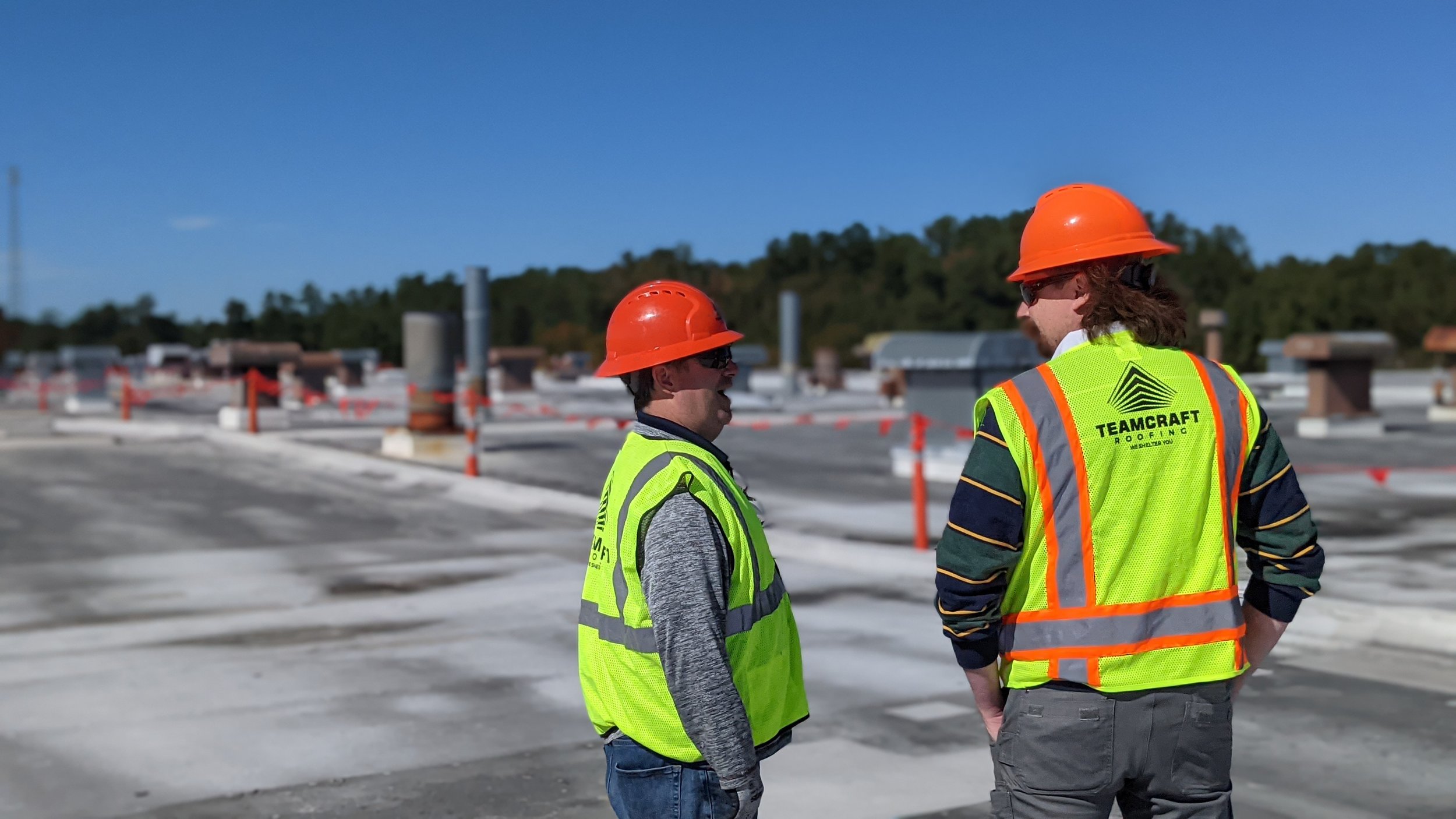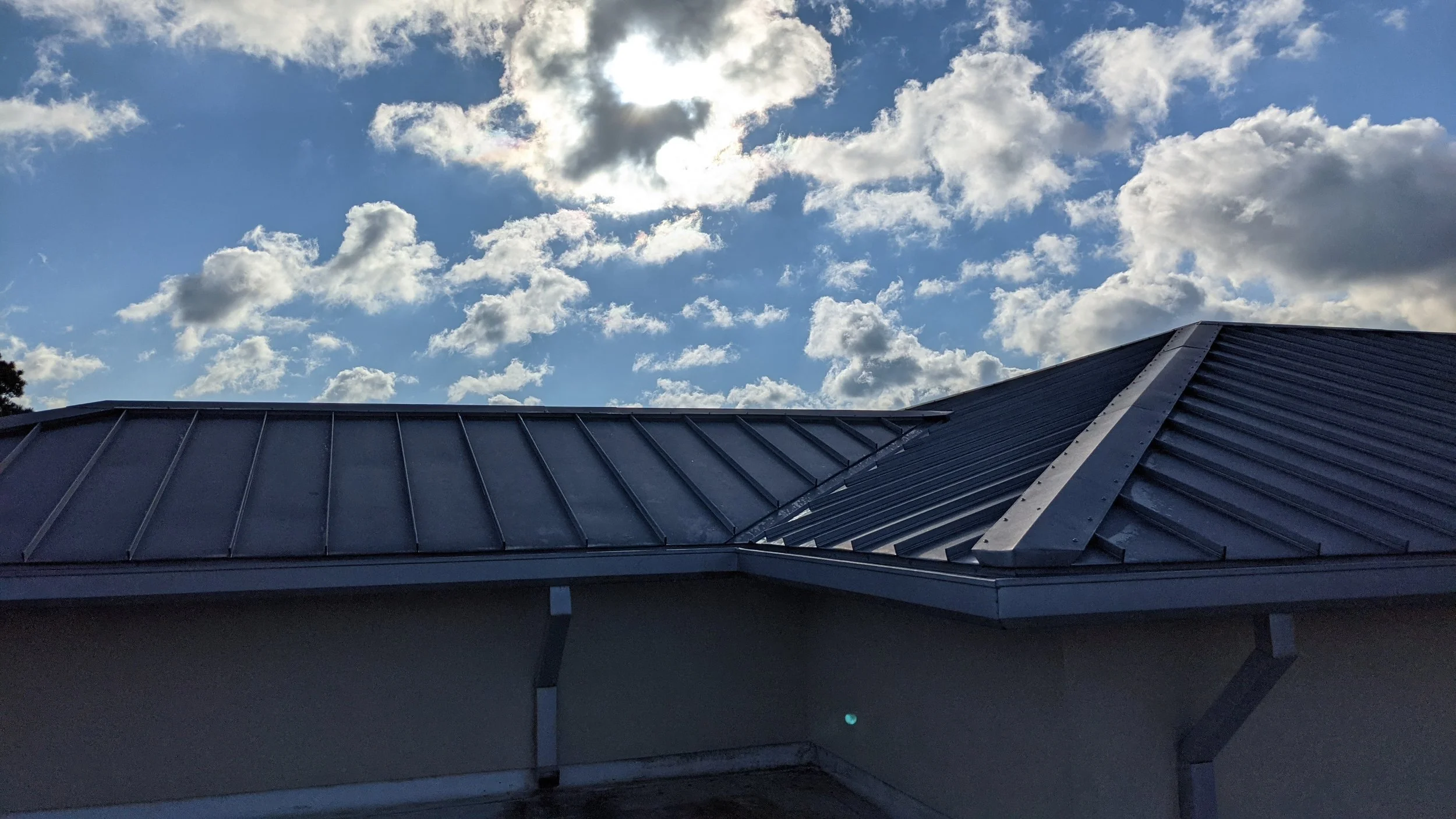Metal Roofing - A Deep Dive
One roofing material with an incredibly long history that is still widely available today for commercial and residential building use is metal. Metal has become an increasingly popular roofing material over the past twenty years with the rise in demand for prefabricated building materials, but it has been utilized in commercial roofing since at least the 1700s. In this post we will take a detailed look at the history, application, cost, benefits and problems associated with metal roofs.
What is a “Metal Roof”?
Modern metal roof systems are commonly made of overlapping sheets or shingles of corrugated galvanized steel; however, they can also be made out of stainless steel, aluminum, tin and a variety of other metals. There are two primary methods for installing metal roofing systems:
Exposed Fastener System
Concealed Fastener System, often called the Standing Seam Roof
The History of Metal Roofing
Metal roofing has a long history, dating back to at least the ancient Romans. Most of us have heard of The Pantheon, built in 125 A.D., but what is rarely spoken of is its robust roofing structure. Dorothee Heinzelmann, Michael Heinzelmann, and Werner Lorenz report in The Construction History Journal that The Pantheon’s solid bronze roofing structure weighed a whopping 152 tonnes! It was the only purely metal roofing structure built until the Industrial Age, which began in the late 1700s.
Between the early Pantheon and the birth of modern commercial metal roofing, there were some significant buildings constructed with wood framing to support metal plated roofs. The Dome of the Rock is a notable, and possibly the first, example of this, built in the year 1023. This world renowned building is widely regarded as the most holy site of the Islam religion, and the world’s oldest extant Islamic monument. It is one of the most distinctive building in Israel, largely due to the momentous gold plated dome that sits over the structure. In 1992, King Hussein of Jordan personally funded a $8.4 million project to replace the Dome’s leaking roofs which required 1,380 gold plated panels.
One of the next major developments in metal roofing was the introduction of copper plates and shingles, a material preferred by many early European societies. Some speculate that the first copper roof was a cathedral in Hildesheim Germany that was built in 1230. According to Unesco World Heritage, another one of the early applications of copper roofing is the Kronborg castle in Denmark, completed in 1585. This roof was largely untouched until its restoration in 2009… We think a 424 year old roof speaks for itself! Copper is a long lasting building material. After initial early European success the copper craze moved to the colonies, and has deep rooted American history. The first copper rolling mill in The United States was The Revere Copper Rolling Mill, started by none other than Paul Revere himself in 1801! The Revere company created a manufacturing process that allowed copper to become more affordable, and consequently increasingly popular. In the mid-1900s there was a large push for its use in many modern municipal buildings, and it is still used for its charming visage today by my many architects.
Arguably, the most significant technological contribution to metal roofing occurred in the late 1700s with the birth of mass produced sheet metal. The idea was first recorded in the 1500s by Leonardo Divinci; he produced what many claim to be the first written idea for a rolling mill. Roughly 100 years later the first rudimentary rolling mills brought his ideas to life, but the sheet metal process was not perfected until the 1700s. In 1770 the Swiss engineer, Jean Pierre Droz, perfected the sheet metal process, which allowed for the start of mass production on a scale not seen before. It did not take long for the construction industry to see the many benefits of sheet metal, and it has held its popularity fairly uniformly since then.
Metal Roofing Application
The two most commonly used methods for installing metal roofing are the exposed fastener and concealed fastener systems:
1. Exposed Fastener System
True to its name, the exposed fastener system leaves the screws holding the metal roof to the structural deck exposed. Any time metal is drilled with a screw it has the increased likelihood of leaks and rust. An important quality of metal that affects this installation method is its propensity to expand and contract with temperature swings. As the metal moves it puts increased pressure on the screws, which over time can work them out of the metal and leave an opening in the roofing system that can lead to water intrusion. Unsurprisingly, this method of metal roofing has been plagued with poor performance and is used less often than other methods. However, it is worth mentioning it is usually the cheapest method of installation.
2. Concealed Fastener System
Concealed fastener systems (typically, but not exclusively, a standing seam system) have metal panels that are fabricated with interlocking seams. Screws are then used to attach the side fastener fins into the deck, which limits and conceals screw usage, and protects from the likelihood of rust or weather damage. Concealed fastener systems are generally more durable than exposed fastener systems; however, if it is installed incorrectly there is an increased risk of oil canning, and potentially other construction defect problems. According to The Metal Construction Association, oil canning is defined as, “Visible waviness in the flat areas of metal roofing and metal wall panels. In technical terms, oil canning is referred to as elastic buckling (more commonly known as “stress wrinkling”). It can occur in any type of metal panel: steel, aluminum, zinc, or copper.” There are many reasons a roof can experience oil canning, and it takes a professional roofing contractor to ensure this problem does not occur. To prevent oil canning contractors use clips which allow metal panels to expand and contract without significant pressure on the fasteners. Concealed fasteners are generally preferred for their aesthetics as there are no holes drilled through visible metal.
Metal Roofing Thickness or “Gauges”
One of the key decisions a builder must make when designing a metal roof is selected the gauge of the metal cut. It is critical to consult a roof consulting expert or engineer when decided which gauge, panel type, and distance between metal purlins you are going to use on any given project. Generally speaking, heavier gauge roofs are more durable and safe, but an engineer must evaluate that the structure is not overburdened. It is always important to have an engineer stamp the drawings for a metal roof application, as they often add significant weight to the roof.
Costs Associated with Metal
Costs will vary on any roofing project according to the required detail work and scope. The cost of materials is also fluctuating due to the ongoing international supply chain challenges; however, Roofing Contractor reports the following price approximations for the following metal supplies:
Steel metal roofs can be installed with galvanized or galvalume steel. Galvanized steel cost on average $150 to $350 per square, and galvalume $75 to $250.
Stainless steel is an even stronger option than galvanized or galvaume steel, and can last potentially sixty years. The cost averages between $400 to $1,200 a square.
Aluminum is a good choice for buildings close to saltwater environments, and can range between $150 and $600 per square for the metal material costs.
Copper is a striking material, but can be hard to work with and comes with a larger price tag. Copper on average costs $800 to $1,500 a square.
Zinc is one of the longest-lasting metal roofing materials and costs between $600 to $1,000 a square.
Pros and Cons of Metal Roofing Systems
There are many benefits to utilizing a metal roofing system, most notably the longevity. Many roofing contractors are able to offer extended warranties on metal roof installations because the material holds up exceedingly well to most weather environments and usage. Metal is hard, and the hardness gives it the strength to withstand a wide array of hazard. The durability of metal roof systems allows for its use in corrosive environments, such as some chemical manufacturing facilities. Metal also has the distinct advantage of coming in multiple color choices which makes it versatile and aesthetic. It can be coated with a wide variety of protective products to further strengthen the roofing system.
However, it is important to recognize that metal becomes exceedingly hot after facing hours of prolonged sunlight, and can consequently cause ventilation and heat exposure risks to professionals working in the metal roof environment. Metal is also a slippery substance when wet, with little to no traction and can present serious fall hazards to inexperienced contractors. Another downside of metal roofing is its cost. While the lifespan of a metal roof can be double or triple that of others systems, the cost can come at a potentially even greater multiplier. The last consideration we advise our clients to evaluate is if the noise generated from rain on a metal roof is going to be a problem for their business. Years ago we met the owners of a theater in Boston who greatly lamented how rain could ruin one of their performances. The lesson here is that metal roofing is a good option for some, but not all, clientele.
TeamCraft Roofing is qualified to handle your commercial or industrial metal roofing needs. Give us a call today to discuss your metal roofing needs and questions!


